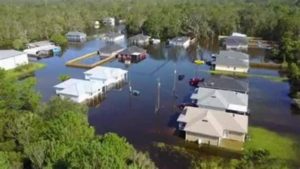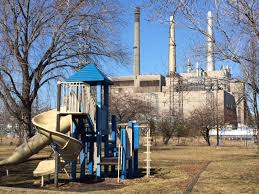Environmental Injustice: Learn the Risks to Your Patients
Joy Lloyd-Montgomery
Environmental injustice could be the most important health risk factor you’ve never heard of. Why is a child in your practice falling behind in school? Why does a teenager have asthma? Why does a young adult have peripheral neuropathy or a young professional report multiple miscarriages? Each of these problems may have its roots in environmental injustice.
Health professionals who understand the principles of environmental justice are better prepared to recognize the patients at risk in their practices and to advocate for just decision-making in their communities.
The environmental justice movement in the United States began in the early 1980s. In 1982, officials selected Warren County, North Carolina, a rural, predominantly African-American community, to be the site for a hazardous waste landfill. Over 500 environmentalists and civil rights activists protested this decision. It is believed that their mobilization catalyzed the environmental justice movement. They helped bring attention to the issue of poor people and minorities often being unfairly burdened by environmental pollution. Unfortunately, that was not enough. Those in Warren County were unsuccessful in halting construction. The fight for environmental justice continues today as race is still the top predictor of toxic facility placement in the United States.1
 The legacy of racist and unjust land-use practices and environmental policies is that underprivileged populations are exposed to high levels of environmental toxins and pollutants. These contribute to poor health outcomes and higher healthcare costs among communities that already face pre-existing health and economic disparities. Your patients may be exposed to toxins or radioactivity by living near industrial sites, mines, or oil drilling operations that contaminate the soil, air, surface water, or even the drinking water. Poor and minority families are more likely to live, work, and go to school in substandard buildings with lead paint or lead-containing water pipes. Poorer communities are more likely to be located in low lying areas where they are vulnerable to flooding that is more frequent worldwide with global warming.
The legacy of racist and unjust land-use practices and environmental policies is that underprivileged populations are exposed to high levels of environmental toxins and pollutants. These contribute to poor health outcomes and higher healthcare costs among communities that already face pre-existing health and economic disparities. Your patients may be exposed to toxins or radioactivity by living near industrial sites, mines, or oil drilling operations that contaminate the soil, air, surface water, or even the drinking water. Poor and minority families are more likely to live, work, and go to school in substandard buildings with lead paint or lead-containing water pipes. Poorer communities are more likely to be located in low lying areas where they are vulnerable to flooding that is more frequent worldwide with global warming.
Environmental injustices are not limited to the United States. We see them in Ecuador and Columbia where oil companies are contaminating the lands of indigenous peoples.2 In Puerto Rico’s Guayama-Salinas region, a low-income area that has more blacks than the national average, toxic coal ash containing high levels of arsenic and heavy metals from a coal-fired electric power plant was dumped in the local landfills, despite a promise to not do so.3 People in the poor community of Copsa Mica in Romania, living near factories producing carbosin for cancer chemotherapy and products containing metals including zinc, lead, copper and cadmium, are exposed to lead and toxic soot. That city has the highest infant mortality rate in Europe; life expectancy is lower than the national average.4
Many people are exposed to toxins that were left behind after businesses abandon a site. Examples of these businesses include dry cleaning shops, gas or petrol stations, military bases, manufacturing companies, and chemical plants. Heavy metals, polychlorinated biphenyls, and petroleum hydrocarbons are common contaminants. In Canada and the United States, such abandoned sites are called “brownfields”, and more than 700,000 have been identified for cleanup in these two countries alone. A U.S. Environmental Protection Agency search engine makes it easy to locate brownfields sites throughout the U.S.5
People who live close to major roadways or intersections are subjected to hazardous pollutants from  vehicle emissions. Many busy roadways were knowingly placed near where poor people and minorities live, increasing their risks of asthma attacks, headaches, respiratory illnesses, and heart disease. This may explain why black children in the United States have the highest prevalence of asthma compared to other races.6 Discriminatory education, economic policies, and racism often leave people with no choice but to live in environmentally-contaminated neighborhoods.
vehicle emissions. Many busy roadways were knowingly placed near where poor people and minorities live, increasing their risks of asthma attacks, headaches, respiratory illnesses, and heart disease. This may explain why black children in the United States have the highest prevalence of asthma compared to other races.6 Discriminatory education, economic policies, and racism often leave people with no choice but to live in environmentally-contaminated neighborhoods.
As health professionals, we can learn how decisions are made and can become advocates for environmental justice. We can strengthen community groups by joining them in advocating for fairness and health-conscious planning. We can participate in local planning commissions, zoning boards, and environmental regulatory departments. These government agencies tend to represent the interests of businesses and developers at the expense of the health of the people dwelling nearby. Informed physicians, dentists, pharmacists, nurses, and other health professionals are needed to provide the “health voice” in order to foster policies that protect minority and low-income communities from hazardous environmental exposures. Our health professional societies can play constructive roles as well and insist that members of these communities are themselves represented.
Environmental justice reminds us that obtaining the “social history” needs to remain a vital part of every patient encounter.7 Health professionals should ask questions about where a patient lives, works, and plays. We should try to learn about our patients’ neighborhoods and to be able to recognize what environmental conditions may affect our patient’s health and well-being. We bear a responsibility to help protect vulnerable, marginalized communities from environmental injustices by advocating for fair environmental policies and for informed community participation.
 Joy Lloyd-Montgomery is Associate Editor of My Green Doctor. She works in the Department of Pediatrics, University of Maryland School of Medicine, Baltimore, MD, USA.
Joy Lloyd-Montgomery is Associate Editor of My Green Doctor. She works in the Department of Pediatrics, University of Maryland School of Medicine, Baltimore, MD, USA.






